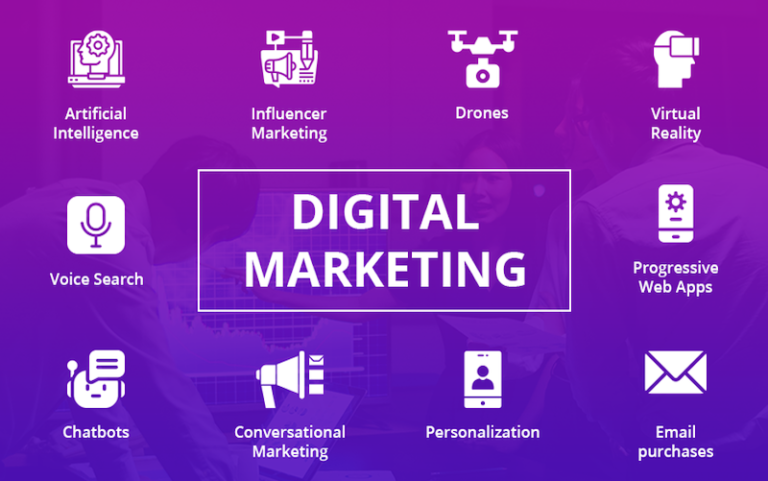
The rapid digitisation brought on by the Covid-19 pandemic has forced a sea change in how sales, and particularly B2B sales, are conducted.
Twenty-nine percent of companies in the Technology sector received an ‘A’ grade for their Personalisation, while 6% achieved a ‘B’ grade; more than half (51%) achieved an ‘F’ for personalising one or no elements of their outreach message. Again, Telecommunications scored even lower with only 16% of companies receiving an ‘A’ grade, 6% achieving a ‘B’ grade, and a full 65% only personalising a single element, or worse, none at all.
How well has Sales managed to rise to this challenge – particularly in the world of B2B, where buying cycles are already elongated due to the sizeable nature of the purchases that are made, and tend to depend all the more heavily on relationships and trust? To find out, conversational AI specialists Conversica created the 2020 Sales Effectiveness Benchmark Report, in which they commissioned independent researchers to secretly shop with 1,177 companies across three sectors: two B2B (technology and telecommunications) and one B2C (media & entertainment).
The companies surveyed in Conversica’s Sales Effectiveness Benchmark Report were assessed on four key areas: Promptness – speed of initial reply; Persistence – how often they followed up; Personalisation – how well they tailored their response(s) to the individual; and Performance – how effectively their messages managed to reach their target, since many email responses can fail to reach a consumer due to being filtered into spam, junk or clutter folders.
The 4 Ps: Promptness, Persistence, Personalisation and Performance
Speed of response can be key to how likely a sales prospect is to convert, especially when a customer is in touch with several companies; responding quickly can mean you get there ahead of the competition, and while your product is still front-of-mind. Yet only 35% of companies contacted by Conversica’s researchers scored an ‘A’ grade (meaning they responded in 0-5 minutes) or ‘B’ grade (meaning they responded in 6-60 minutes) for Promptness.
Finally, companies were scored on Performance – how effectively their messages reached the recipient, based on which Gmail folder they were filtered into (Primary inbox, Social/Promotions, or Spam). Only 4.3% of companies overall had messages sent to Spam (achieving an ‘F’) grade, but at the same time, barely more than one in ten (12%) managed to reach a recipient’s primary inbox, with many messages being filtered to Promotions or Social. Performance among Technology sector companies was roughly average, with 12% achieving an ‘A’ grade for managing to consistently reach the recipient’s primary inbox – meaning that 88% of messages still missed the mark to some extent. Telecommunications companies were again even less successful, with only 9% of messages reaching the primary inbox – and 6% landing in Spam.
The 2020 Sales Effectiveness Benchmark Report highlighted the ground that B2B sales teams have to make up when it comes to responding as rapidly, following up as frequently, and personalising and delivering messages as effectively as they need to in order to be competitive. But even though the scale of the challenge is greater than ever, the technology that can address this challenge has also come on in leaps and bounds, providing sales teams with ways to do more with fewer resources.
When it comes to the personalisation of outreach, there are many different elements of a message that can be personalised, and companies were scored on how many they tailored to the individual buyer; companies that tailored at least five elements were given an ‘A’ grade, four personalised elements received a ‘B’ grade, and so on down to 0-1 personalised elements (an ‘F’ grade).
The surveyed companies also scored poorly in the level of Persistence demonstrated, with 65% making two or fewer attempts to reach out to the ‘buyer’. Within the Technology sector, only 37.5% companies made more than two attempts to reach out, while Telecommunications scored even more poorly with just 23% of companies following up more than twice.
While solutions like conversational AI and IVAs are not a silver bullet – nor a substitute for a well-thought-out sales strategy and savvy human representatives – they can nevertheless deliver a significant advantage to the sales teams who employ them in the right ways, and may start to be the determining factor between the organisations who thrive and those who struggle in the newly-digitalised age of B2B sales.
The Covid-19 pandemic has of course taken its toll on the ability of companies to respond effectively to new prospects; as the Sales Effectiveness Benchmark Report notes, “it’s likely that some of these businesses have reduced staff, redirected resources, struggled with new internal stressors, and endured higher workloads.” And yet, without the means to take advantage of inbound leads and build connections that eventually lead to a sale, companies will struggle to break this cycle. So, what can be done to address the situation?
“Prospects and customers expect a prompt and personalized touch when investigating your products and services. With high enough traffic volumes, it would be impossible for any Sales team to deliver a quality experience to every contact.” Conversational AI and IVAs can bridge this gap by responding quickly to all incoming prospects and delivering a personalised first touch, such as via website chat, email or SMS, at a scale that would be impossible for a human salesperson. Sales teams can use these tools to sift through huge numbers of cold or untouched leads to find hidden opportunities, and nudge customers towards the next action, such as scheduling a meeting or demo, that will bring them into contact with a human sales representative.
As the report author writes,
Personalised interactions at scale
The report authors noted that, “These … results indicate that it is difficult to achieve an effective promptness rate with people-power alone. Many potential conversions are answered too late and fall through the cracks.”
Among the B2B sectors that researchers studied, the Technology sector scored relatively highly for Promptness, with 37% of companies achieving an ‘A’ or ‘B’ grade. The Telecommunications sector, however, scored much more poorly, with only 28.5% of companies responding within an hour of interest being demonstrated.
The report suggests techniques that can equip sales teams to respond effectively in the newly-digitalised environment, including identifying prospects via account-based marketing, using dynamic sales planning to promote agility and flexibility, and embracing tools like conversational AI and intelligent virtual assistants (IVAs).
Here’s what they found, and what it means for how well sales teams are making use of digital channels to connect with prospects – as well as how they could be using technology to address the areas where performance is lacking.
Once a discipline that revolved around face-to-face meetings, trade shows and personal connections, sales teams during Covid-19 have needed to adapt to a new world of online touchpoints and virtual meetings – while still maintaining the same quality of customer experience and the same individualised touch.
Another guide produced by Conversica and available from the Marketing Week Knowledge Bank, Rise of the Digital Sales Force, outlines the challenge faced by B2B sales teams as they scramble to meet the demands of consumers in the Covid-19 era; consumers who overwhelmingly favour digital self-serve or remote interactions – but also expect immediate, personalised responses from companies.





